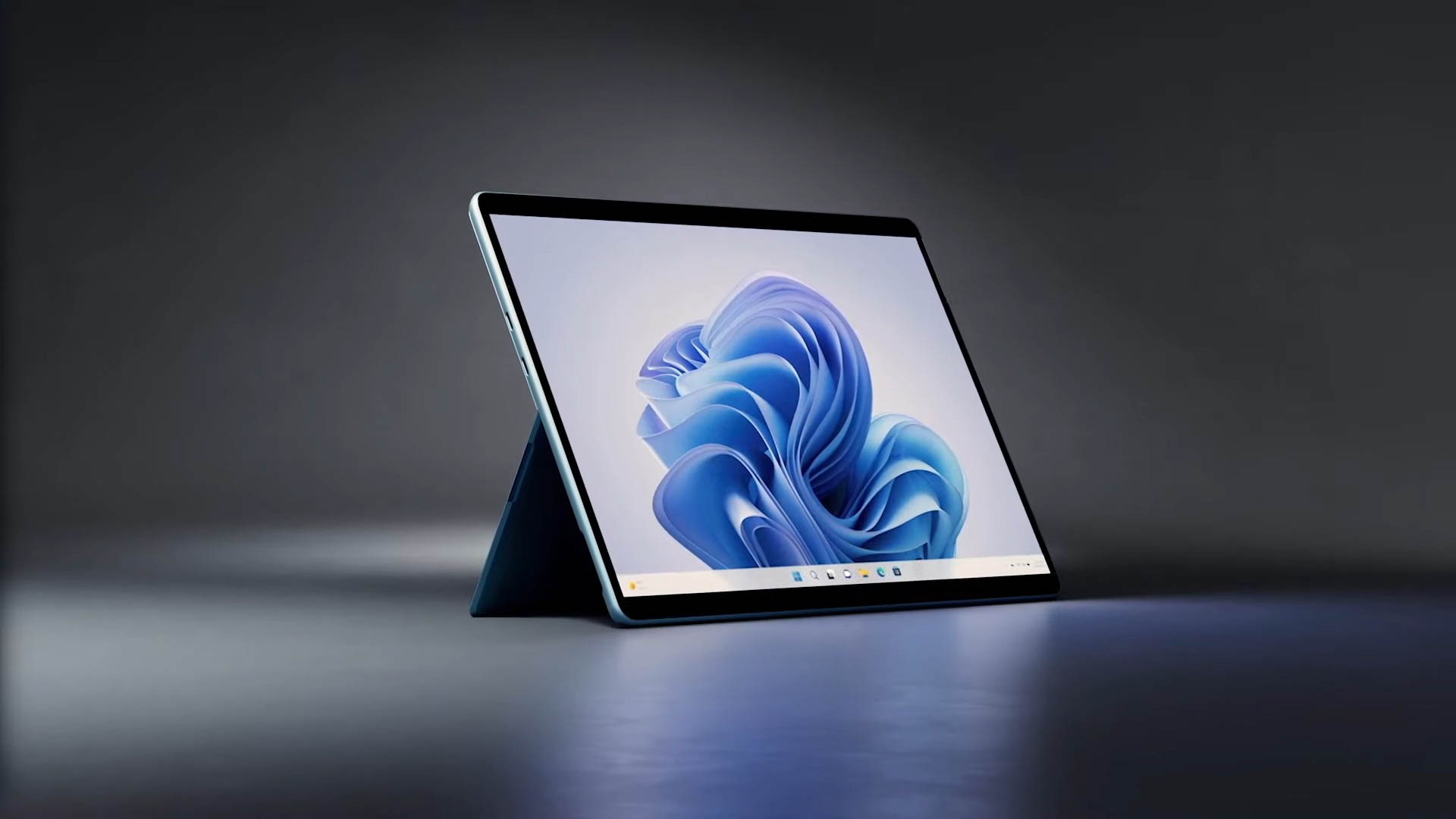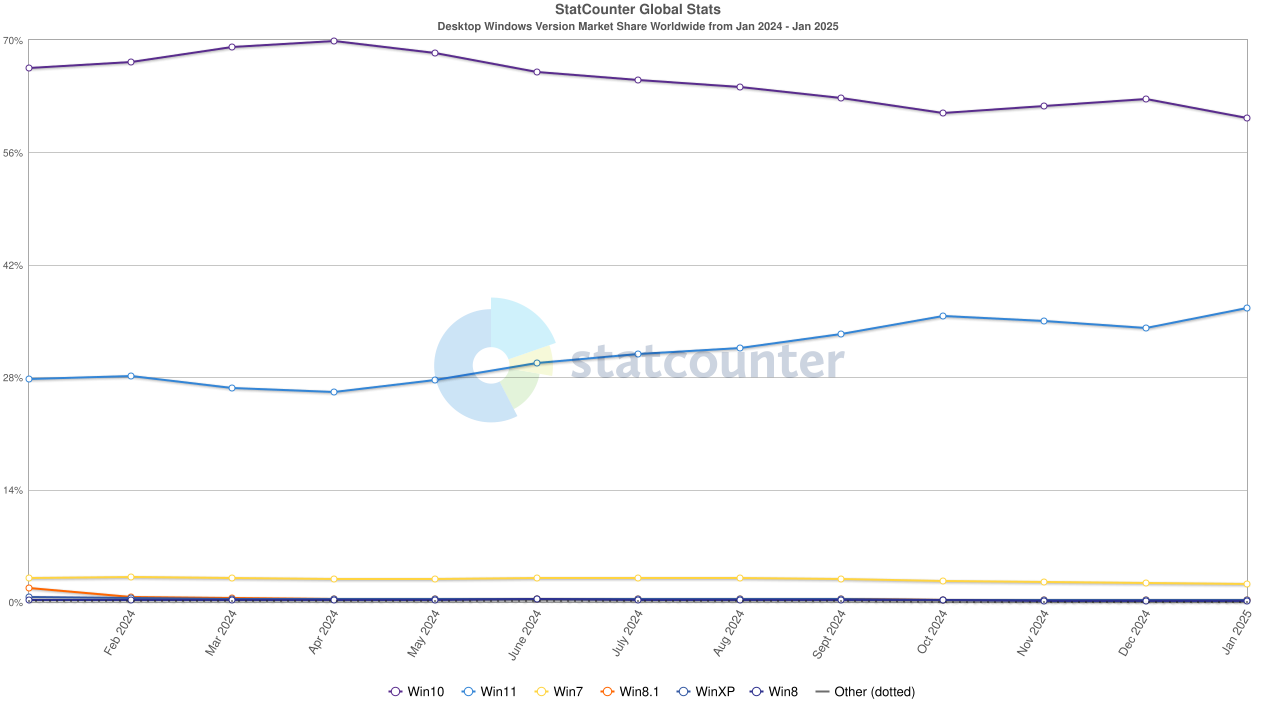Windows 11 may have just kickstarted 2025's biggest comeback story
After months of decline to Windows 10, Windows 11 is on the up-and-up once more

With Windows 10's October 14 end-of-support date approaching, its impressive popularity may finally be waning after market share estimations by StatCounter have seen Windows 11 climb to its highest point since its October 5, 2021 launch.
Now sitting pretty with a 36.65% share of Windows desktop users, Windows 11 appears to be on the up, after overturning a spell of negative growth toward the end of 2024.
However, Windows 11's adoption still pales compared to Windows 10's — which, despite Microsoft's efforts to push users to upgrade, maintains a 60.33% share of Windows desktop users.

What caused Windows 11's user growth?
While the information from StatCounter is a good estimation of how market share is split among desktop Windows operating systems, it doesn't give any explanation as to why Windows 11 has suddenly managed to reverse a two-month drop in users.
For that, we'll need to make a few educated guesses of our own, backed by historical data collected by StatCounter. With this turnaround taking place between December 2024 and January 2025, the most likely cause of Windows 11's rise in adoption is new purchases of desktop, laptop, and handheld gaming PCs over the Christmas/Holiday period.
A similar bump in Windows 11 adoption took place between December 2022 and January 2023, with Microsoft's operating system jumping in market share from 16.97% to 18.12%.
Again, between December 2023 and January 2024, Windows 11's market share rose from 26.54% to 27.83%.
Stay in the know with Laptop Mag
Get our in-depth reviews, helpful tips, great deals, and the biggest news stories delivered to your inbox.
While these increases seem small, they're often accompanied by similar, if not larger, increases between January and February.
What's next
Windows 11 adoption has been slowly ramping up since its October 5, 2021 launch. However, 2024 was the first year that saw the operating system take several sharp downturns in users. First between the months of February and April, and then again between October and December.
It's likely that Windows 11 market share will continue to grow in February and, with Windows 10's end-of-support date looming, continue to grow throughout 2025 as individuals and companies complete the jump to Microsoft's latest operating system.
While Windows 10 users will be able to keep using the operating system beyond the October 2025 end-of-support date, it will mean they'll be left without access to important security updates and technical support — unless they subscribe to Microsoft's ESU (Extended Security Updates), available for only a single year at a price of $30.
Alternatively, businesses can subscribe to Microsoft's ESU for up to three years. However, the price is much steeper, starting at $61 for the first year, $122 for the second, and $244 for the third and final year.
Once you factor in the potential increase in prices for computing hardware due to Trump's planned tariffs on overseas tech, it makes sense that users and businesses will be more open to upgrading their devices to meet Windows 11's expanded minimum hardware requirements before it becomes more expensive to do so at a later date.
More from Laptop Mag

Rael Hornby, potentially influenced by far too many LucasArts titles at an early age, once thought he’d grow up to be a mighty pirate. However, after several interventions with close friends and family members, you’re now much more likely to see his name attached to the bylines of tech articles. While not maintaining a double life as an aspiring writer by day and indie game dev by night, you’ll find him sat in a corner somewhere muttering to himself about microtransactions or hunting down promising indie games on Twitter.
You must confirm your public display name before commenting
Please logout and then login again, you will then be prompted to enter your display name.